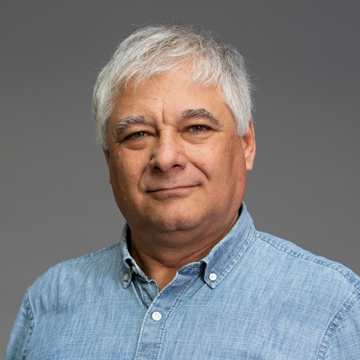Neither Basic Nor Applied: Lessons from Computing Research in Academia, Government, and now Industry
In this session of Faculty Summit 2011, Peter Lee of Microsoft Research relates his journey from academic, to government, to industrial research organizations—and how it influenced his view of computing research as well as his plans for Microsoft Research. He introduces examples from this year’s DemoFest that illustrate the uniqueness of computing’s blend of invention, discovery, and engineering. He concludes by explaining how this relates to the success of Microsoft and the computing field.
发言人详细信息
Peter Lee joined Microsoft as a Distinguished Scientist and Managing Director of Microsoft Research Redmond (MSR-R) in September 2010. He comes to Microsoft from the Defense Advanced Research Projects Agency (DARPA) where he served as the founding director of the Transformational Convergence Technology Office. DARPA is the principal agency within the U.S. Department of Defense for research, development and demonstration of high-risk, high-payoff projects for the current and future combat force. In this role, Peter was responsible for developing and implementing the strategic vision and technical plans for a new office in support of DARPA’s mission: to maintain the technological superiority of the U.S. military and prevent technological surprise from harming national security by sponsoring revolutionary research, bridging the gap between fundamental discoveries and their military use. Prior to DARPA, Peter was a professor and head of the Computer Science Department at Carnegie Mellon University (CMU), having also served briefly as the Vice Provost for Research. He joined the CMU faculty in 1987, after completing his doctoral studies at the University of Michigan.
Peter is an active researcher, educator, administrator, and servant to the academic community. His research contributions lie mainly in areas related to the foundations of software reliability, program analysis, security, and language design. He is a former Chair of the Board of Directors of the Computing Research Association and its Government Affairs Committee. He is the author of two books, authored or co-authored more than 50 refereed papers, and has advised or co-advised 14 completed Ph.Ds. Peter has received numerous awards for his research, including the Special Interest Group on Operating Systems Hall of Fame Award for the most influential paper from OSDI; the Association for Computing Machinery’s Special Interest Group on Programming Most Influential Programming Language Design and Implementation Paper; the Allen Newell Award for Research Excellence in Computer Science for Proof-Carrying Code; and the 1994 Herbert A. Simon Award for Teaching Excellence in Computer Science.
Chris Burgess is Principal Researcher and manager of the Text Mining, Search and Navigation Group at Microsoft Research. He is currently interested in machine learning, optimization methods, ranking, and learning for Web applications in general.
David Molnar works in the Security and Privacy Research Group at MSR. His work focuses on software security and on new mobile devices. He loves new sources of data.
Nikolai Tillmann. Principal Research Software Design Engineer, Microsoft Research. Nikolai Tillmann works at Microsoft Research on combining dynamic and static program analysis techniques. He currently leads the Pex project, a framework for runtime verification and automatic test-case generation for .NET applications based on parameterized unit testing and dynamic symbolic execution. He also works on the Spur project, a tracing Just-In-Time compiler for .NET and JavaScript code. Previously he worked on AsmL, an executable modeling language, and the Spec Explorer 2004 model-based testing tool. He co-developed XRT, a concrete/symbolic state exploration engine and software model-checker for .NET.
Ivan Tashev is a software architect in Speech Technology group in Microsoft Research. He received his master’s degree in Electronics an PhD in Computer science from technical University of Sofia, Bulgaria, in 1984 and 1990 respectively. Worked as R&D engineer, researcher and assistant professor in the same university till 1998, when joined Microsoft. His research interests are in the area of multichannel signal processing, array processing, speech enhancement, etc. Dr. Tashev is author of more than 50 scientific papers, several book chapters. He holds more than 20 US and international patents in his research area. He helped the creation of the algorithms behind the microphone array support in Windows Vista, Round Table device, improving the audio quality of the Microsoft web cameras.
- 日期:
- 演讲者:
- Chris Burgess, David Molnar, Ivan Tashev, Nikolai Tillmann, and Peter Lee
- 所属机构:
- MSR-TMSN, Microsoft Research, MSR, Microsoft Research Redmond
-
-
David Molnar
Principal Research Manager
-

Ivan Tashev
Partner Software Architect
-
Jeff Running
-

Nikolai Tillmann
Principal Software Engineer Manager
-

Peter Lee
President, Microsoft Research
-
-
